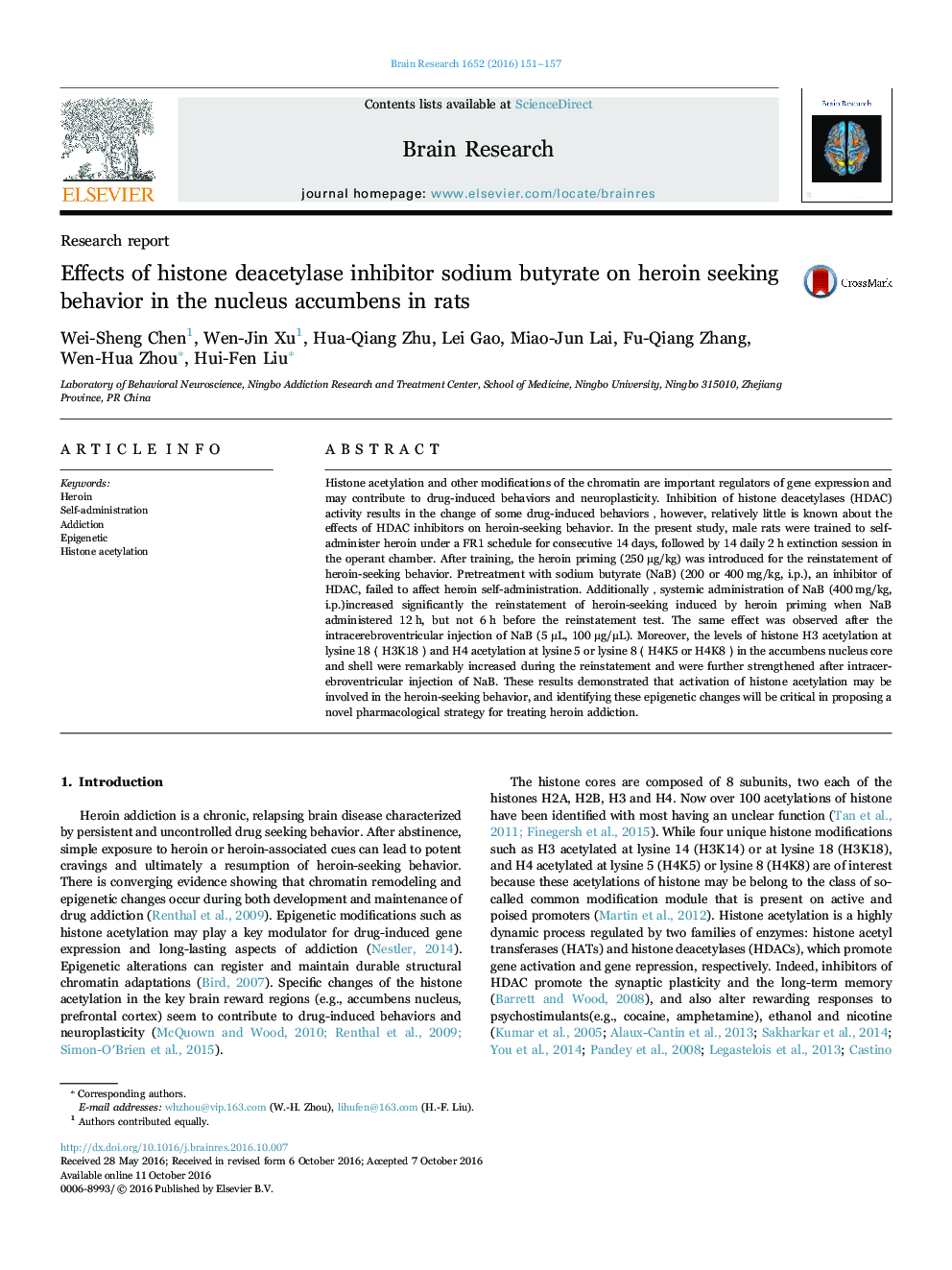| Article ID | Journal | Published Year | Pages | File Type |
|---|---|---|---|---|
| 8839992 | Brain Research | 2016 | 7 Pages |
Abstract
Histone acetylation and other modifications of the chromatin are important regulators of gene expression and may contribute to drug-induced behaviors and neuroplasticity. Inhibition of histone deacetylases (HDAC) activity results in the change of some drug-induced behaviorsï¼however, relatively little is known about the effects of HDAC inhibitors on heroin-seeking behavior. In the present study, male rats were trained to self-administer heroin under a FR1 schedule for consecutive 14 days, followed by 14 daily 2 h extinction session in the operant chamber. After training, the heroin priming (250 μg/kg) was introduced for the reinstatement of heroin-seeking behavior. Pretreatment with sodium butyrate (NaB) (200 or 400 mg/kg, i.p.), an inhibitor of HDAC, failed to affect heroin self-administration. Additionallyï¼systemic administration of NaB (400 mg/kg, i.p.)increased significantly the reinstatement of heroin-seeking induced by heroin priming when NaB administered 12 h, but not 6 h before the reinstatement test. The same effect was observed after the intracerebroventricular injection of NaB (5 μL, 100 μg/μL). Moreover, the levels of histone H3 acetylation at lysine 18ï¼H3K18ï¼and H4 acetylation at lysine 5 or lysine 8ï¼H4K5 or H4K8ï¼in the accumbens nucleus core and shell were remarkably increased during the reinstatement and were further strengthened after intracerebroventricular injection of NaB. These results demonstrated that activation of histone acetylation may be involved in the heroin-seeking behavior, and identifying these epigenetic changes will be critical in proposing a novel pharmacological strategy for treating heroin addiction.
Related Topics
Life Sciences
Neuroscience
Neuroscience (General)
Authors
Wei-Sheng Chen, Wen-Jin Xu, Hua-Qiang Zhu, Lei Gao, Miao-Jun Lai, Fu-Qiang Zhang, Wen-Hua Zhou, Hui-Fen Liu,
